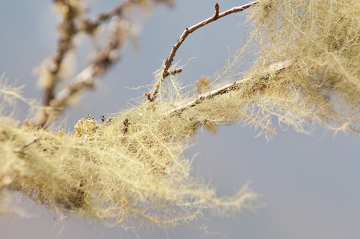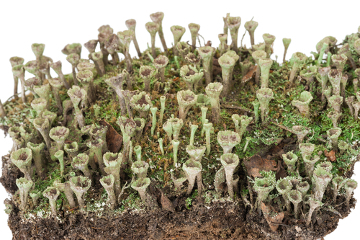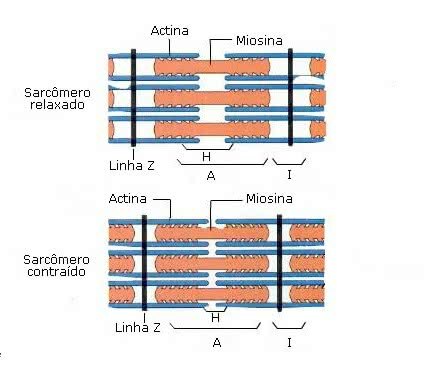Lichens are symbiotic associations between seaweed greens and fungi or between cyanobacteria and fungi. There are approximately 20,000 different species known, which vary in shape, size and habitat.
In lichens, the algae are called photobionts, while the fungus is called mycobionts. The algae that make up the lichens can be cyanobacteria, belonging to the kingdom monera, or green algae, which are grouped in the Protist kingdom. As for the fungi, which are from the fungi kingdom, for the most part, are from the phylum Ascomycota. The fungi that combine to form lichens are known as lichenized fungi.
Both algae and fungi benefit from the formation of lichens. While algae and cyanobacteria provide organic compounds to the fungus, it ensures a more favorable environment for the survival of the algae, protecting them from drying out..

The genus lichen Usnea is an example of fruity stalk
The body of lichens, which is called a stalk because it does not have leaves and stems, varies a lot from species to species. In general, lichens have stems of the types
filamentous, crusty, leafy, fruity, squamulous and dimorphic, besides usually presenting a few centimeters. However, some shapes can reach several meters in diameter.As lichens are associations of fungi and photosynthetic organisms, the dependence on photosynthesis for the survival of this biological unit. Thus, with regard to ecology, lichens have a lot of similarities with the vegetables and, unlike other fungi, do not need to decompose material organic.
Do not stop now... There's more after the advertising ;)

The genus lichen cladony is an example of a dimorphic stalk
Due to the need to obtain light for the photobiont to carry out photosynthesis, lichens are easily found on log surfaces, rocks, walls and walls. They receive different names according to the location in which they develop: saxicolous (they live on rocks), terrestrial (they live on the ground), leaflets (they live in leaves), musculoskeletal (they live with the mosses) and cork crops (they live on trees).
The reproduction of lichens occurs asexually, highlighting the reproduction by fragmentation, by the production of spores, by soredia and by isidia. This last structure can be defined as a projection of the stalk; soredia, on the other hand, constitute a structure formed by algae surrounded by fungal hyphae.

The genus lichen Hypotrachyna it's an example of a leafy stalk
Lichens are very important ecologically, being an example of a pioneer species, that is, a species that manages to establish itself in places that are often inhospitable to most species, such as the surface of rocks. In addition to this importance, lichens are also important air quality indicators, as they are quite sensitive to some pollutants. Concerning economic importance, lichens have antibiotic and antitumor activities, in addition to being used in the manufacture of cosmetics.
Curiosity:The area of Biology that studies lichens is Lichenology.
By Ma. Vanessa dos Santos
Would you like to reference this text in a school or academic work? Look:
SANTOS, Vanessa Sardinha dos. "Lichens"; Brazil School. Available in: https://brasilescola.uol.com.br/biologia/liquens.htm. Accessed on June 27, 2021.

